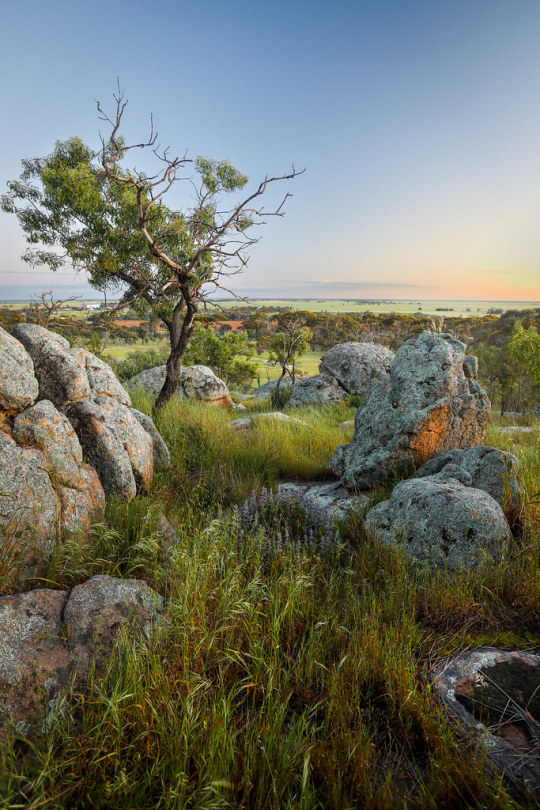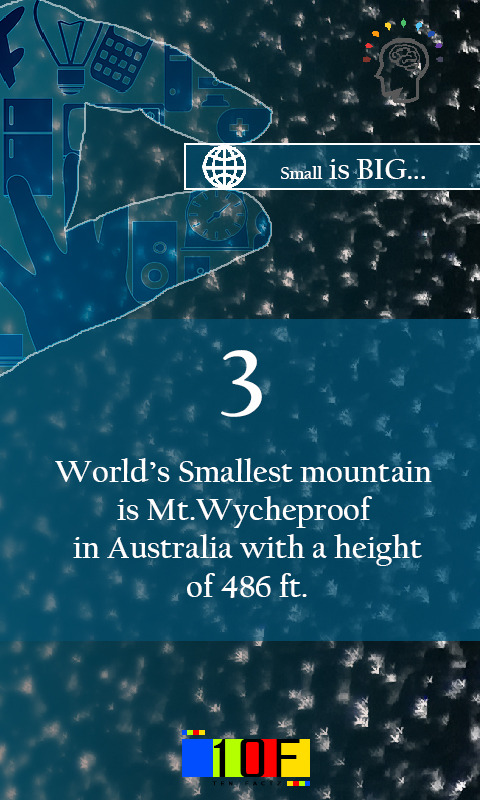#wycheproof
Text

0 notes
Text



reviews for the world’s smallest mountain, mount wycheproof in central victoria

21 notes
·
View notes
Text
Submitted Via Google Form:
I want to create an area of land with lots of rain year round (450 earth days). In monthy averages, as low as 1,500mm during 'dry' season and up to 4,000m during wet season for perhaps 36,000mm annual rainfall?
What kind of geography, other aspects of climate, or types of life that can naturally live there, as well as what might be need to adapt there? How about natural disasters especially floods or landslides?
Tex: Gimme a second to collate the data you’ve presented here-
450 Earth days of rain/year
1,500 mm = 1.5 m, low point of rain
4,000 m, high point of rain
1.5 m + 4,000 m = 4,001.5 m/year
36,000 mm = 36 m, which ≠ 4,001.5 m
For some comparative data, the “List of weather records § Rain” (Wikipedia) and the engineering topic “Rain Rate” (Science Direct).
I don’t know your daily rate of rain, or seasonal rhythms of high vs low rain rates, so that would need calculating. If you know that, then you can build weather patterns around it. I would ideally recommend comparing your rain rates to real-world locations, and take a look at their position on Earth and related meteorological and geophysical characteristics for your starting points.
Feral: Some geological conditions that would likely need to be met for the amount of rainfall you need without it being just completely underwater:
-4,000 meters of rainfall is enough to literally cover the Empire State Building 10x over and then some or cover Mount Wycheproof, the world’s smallest mountain, nearly 100x over.
-Given that every other measurement is given in millimeters, did you really mean 4,000 meter? 4,000 millimeters of rain a month for possibly half the year is still a whole lot. Mawsynram, India has the highest average annual rainfall a year, and they only have just shy of 12 meters of rain annually.
-There needs to be steep drainage, probably into an ocean.
-That much water also needs to be evaporated back into the air. That means sun, heat, and/or wind.
-The process of the water draining will also strip the topsoil, so even if they tried to grow food during the dry season, they would not have very much luck.
How Stuff Works: Weather
Wiki: Mawsynram
Utuabzu: There's a few geographic features you can use to increase rainfall (I assume you meant 4000mm, rather than 4000m, which I don't think is physically possible). You can make use of mountains to create a rain shadow, forcing the rains that would otherwise have fallen further inland to instead fall on the mountains. Relatedly, you can also put a large desert region behind these mountains to create the conditions for a monsoon cycle.
There are three main monsoons on Earth: the Asian Monsoon (driven by the high pressure system that develops over the Tibetan Plateau in Summer), the West African Monsoon (driven by the high pressure system that develops over the Sahara in Summer) and the Australian Monsoon (driven by the high pressure systems that develop over central Australia, though because of interference from other systems like the Indian Ocean Dipole and the Pacific El Niño-La Niña cycle it is significantly weaker and less reliable than the other two).
In terms of adaptations you can look to real-world regions that experience very high rainfall. Traditional architecture in these regions often involves building on high stilts. Drainage is often a significant concern in wider urban planning, and terracing is often very important for agriculture to avoid soil erosion. Floods and landslides are perennial problems in these regions. If there is no volcanism or some other means to refresh soils, the rain can leech the nutrients from them.
Sorry if this is a bit rambling. I'm on painkillers after having a wisdom tooth out.
Feral: After discussing this further with Tex, I want to add my own thoughts on the math to this idea.
My assumptions:
-Given you called out 450 Earth days for the year but not the length of days or months, I’m going with a 24-hour day cycle and 28-31 days for the month. 30 goes really well into 450, so we’ll say a 15-month year.
-I can’t imagine 4,000m is what you meant given reasons stated above, so I’ll work with 4,000mm.
Starting backwards from 36,000mm, we have
36 = 4x + 1.5y
Given that 4 x 9 is 36, and we need to be able to account for the dry season, x < 9.
36 = 4(8) + 1.5y => a dry season lasting 2 ⅔ months which is not enough to give us 15 months.
36 = 4(7) + 1.5y => y = 5 ⅓
36 = 4(6) + 1.5y => y = 8
36 = 4(5) + 1.5 y => 10 ⅔
36 = 4(4) + 1.5y => 13 ⅓
So to get approximately 36,000mm annually, you need a rainy season between 5 and 6 months long, or between 150 and 180 days. Your daily average rainfall during this time will be 133.33 mm.
So given the much longer year, how do the numbers break down to compare to the real world?
133.33mm is half the average rainfall Mawsynram receives in the entire month of October. Daily. For 5 to 6 months. At the height of Mawsynram’s 9 month rainy season, which is in July, the average rainfall is 3,300mm. When you take the entire 9 month season, the average rainfall is 12,345mm in the season, or 1,371.667mm averaged monthly. Even when you take out March and November, when the season is just getting started and petering off respectively, the total is 12,099, and the monthly average is 1,728.429mm.
Now, given that your year is approximately (a little less than) 1.5 times the length of an Earth year, how does that work out?
Taking an average annual rainfall of 11,872mm x 1.5 = 17,808. Your rainfall is still well over double the wettest place on Earth.
And that’s before we get to the proportion in the year of rainy season to dry season. If you proportion your months more like Mawsynram’s, you’ll end up with 11.25 months of rainy season (¾ of 15), which is 45,000mm of rain in just the rainy season.
My main recommendation after all of this is to reevaluate your numbers, and I hope we’ve given you the tools you need to do so.
19 notes
·
View notes
Photo

Wycheproof, VIC, April 2019
8 notes
·
View notes
Text

~ Beautiful BANA ~
#eric bana#out & about#this man ...#uhhhggggg he is so damned pretty#spreading the bana love#one post at a time#fan photos#bakery on broadway#wycheproof#ericbana
16 notes
·
View notes
Photo

That desire led us to Mount Wycheproof, the world's smallest registered mountain. Located in Australia's Terrick Range, Mount Wycheproof stands 486 ft (148 meters to the rest of the world) above sea level, which is not bad as far as small mountains go.
1 note
·
View note
Text
(( i’m sticking to the whole ‘the og primes are mountain-sized so like’
micronus is the size of a pretty decent hill
or mount wycheproof
teeny ))
4 notes
·
View notes
Note
Greetings! Did you know Mount Wycheproof is world's smallest registered mountain? Located in Australia's Terrick Terrick Range, Mount Wycheproof stands only 148 meters above sea level. - 🐚
wut! yooo!
1 note
·
View note
Photo

“The king and queen of the mount” Big thanks to the town of Wycheproof Victoria for having me and trusting me with something that means so much to so many people! Wyche is a small country town with big stories and even bigger personalities! If youre looking to experience rural Australia where the aussie spirit still exists Wycheproof is your town!the people are hardworkers, theyre welcoming and will give anyone a go! Thanks to the Buloke and Reece Hendy for organising the job! Buloke Shire Council https://www.instagram.com/p/Cb4Js4zrWB7/?utm_medium=tumblr
0 notes
Photo

@TheHackersNews : Project Wycheproof, a tool to test #crypto libraries against known attacks, has released tons of new test vectors for many crypto primitives. https://t.co/PtnHFuOzop Developed and maintained by @XorNinja and members of #Google Security Team. https://t.co/DnY9jTKqjL
0 notes
Text
Fakta Unik Wycheproof di Australia, Gunung Terkecil di Dunia yang Memiliki Puncak Berbatu
Salma Nania Fakta Unik Wycheproof di Australia, Gunung Terkecil di Dunia yang Memiliki Puncak Berbatu Artikel Baru Nih Artikel Tentang Fakta Unik Wycheproof di Australia, Gunung Terkecil di Dunia yang Memiliki Puncak Berbatu Pencarian Artikel Tentang Berita Fakta Unik Wycheproof di Australia, Gunung Terkecil di Dunia yang Memiliki Puncak Berbatu Silahkan Cari Dalam Database Kami, Pada Kolom Pencarian Tersedia. Jika Tidak Menemukan Apa Yang Anda Cari, Kemungkinan Artikel Sudah Tidak Dalam Database Kami.
Judul Informasi Artikel :
Fakta Unik Wycheproof di Australia, Gunung Terkecil di Dunia yang Memiliki Puncak Berbatu
Di dunia ini ada gunung terkecil yang mungkin belum pernah kita dengar sebelumnya, yaitu Gunung Wycheproof.
http://www.unikbaca.com
#Salma Nania Fakta Unik Wycheproof di Australia#Gunung Terkecil di Dunia yang Memiliki Puncak Berbat
0 notes
Text
What Is The Smallest Mountain In The World?
What Is The Smallest Mountain In The World?
Mountain enthusiasts usually gravitate toward the world’s highest peaks, but there’s no reason to ignore the smallest mountain in the world!
Mount Whycheproof, Australia | By Prince Roy [CC BY 2.0], via Wikimedia CommonsMount Wycheproof sits at 148 meters | 486 feet in the Terrick Terrick Range near the town of Wycheproof in Victoria, Australia. Mt Wycheproof is registered as the smallest…
View On WordPress
0 notes
Photo


Wycheproof, VIC, April 2019
7 notes
·
View notes
Text
Man 'on the run' for crimes across Victoria was caught in a Long Gully <b>garage</b>, court told
A MAN who was “on the run” from police after committing crimes in Melbourne, Avoca, Gisborne and Wycheproof was found living in a garage in Long ...
from Google Alert - the garage http://ift.tt/2hxsvHH
0 notes